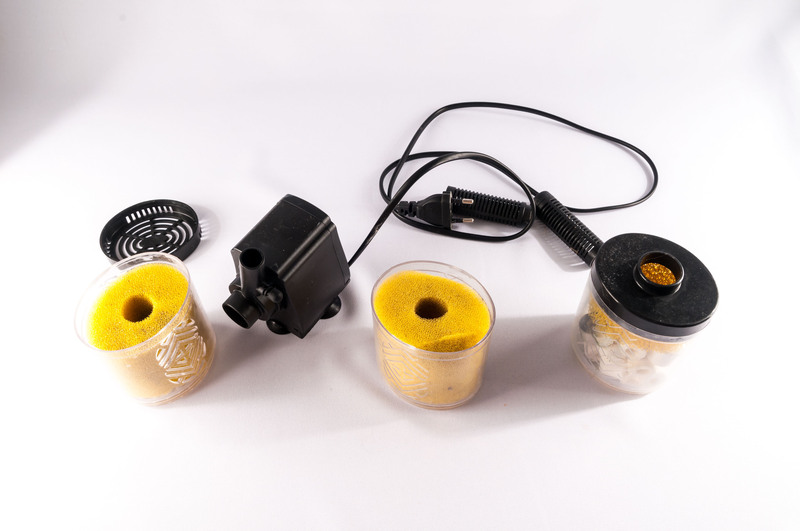Effective Methods for Storing an Unused Freezer Safely
Posted on 18/05/2025
Effective Methods for Storing an Unused Freezer Safely
Whether you have recently upgraded to a larger freezer or simply need to store your current one temporarily, understanding the proper ways to store an unused freezer is crucial. Not only will smart storage maintain the appliance's efficiency for future use, but it will also prevent the growth of mold, bacteria, and even avoid damaging the freezer itself. This comprehensive guide explores the best practices for storing an unused freezer safely, with practical tips and expert advice to prolong your freezer's lifespan.
Why Safe Storage of an Unused Freezer Matters
Unplugged freezers that are not stored and maintained correctly can develop unpleasant odors, harbor mold and mildew, and may even experience mechanical issues that diminish their value over time. By applying effective unused freezer storage methods, you ensure:
- Longevity of the appliance
- Prevention of internal and external damage
- Safety in your home or storage area
- Efficient reactivation whenever needed
- Reduction of odors and mold issues
Let's now dig deeply into each stage of storing an unused freezer safely and effectively.

Preparation: Clean and Defrost Before Storing
1. Remove All Items
The first step to effective unused freezer storage is to ensure the appliance is completely empty. Remove all food, ice packs, shelves, bins, drawers, and any detachable parts. This prevents lingering smells and avoids the risk of forgotten food becoming a source of bacteria or pests.
2. Thoroughly Defrost the Freezer
Unplug the freezer and allow it to come to room temperature so that any frost or ice inside melts naturally. Place towels around the base to absorb water. Alternatively, if your appliance has a defrost water drain, use it for a controlled defrosting.
- Unplug at least 24 hours before cleaning.
- Keep freezer doors open to accelerate the thawing process.
3. Clean Inside and Out
Hygiene is a fundamental part of properly storing an unused freezer. After defrosting, scrub the interior and exterior using a mild detergent and warm water. Baking soda can be used for deodorizing stubborn smells.
- Mix two tablespoons of baking soda per quart of warm water for internal cleaning.
- Wipe down all shelves and compartments thoroughly.
- Don't forget to clean the freezer door gasket for a proper seal.
4. Dry Completely
Moisture is the enemy of safe appliance storage. Use clean towels or let the freezer air-dry until it is completely moisture-free. Trapped humidity can lead to mold growth and even rust over time.
5. Deodorize, If Needed
If your freezer has a lingering smell, place a box of baking soda inside or leave an open container of activated charcoal for a day or two before storage. This will absorb and neutralize any odors, making the freezer ready for future use.
Deciding Where to Store Your Freezer
The location you choose to store your unused freezer is a crucial factor in preserving its condition. Consider the following criteria:
- Dryness: Avoid damp basements or garages where humidity can accelerate rust and mold formation.
- Ventilation: Proper airflow around the appliance prevents mustiness and condensation.
- Safe Temperature: Ideally, store your freezer indoors at a moderate and consistent temperature. Extreme heat can warp seals, while freezing cold can cause parts to crack.
Recommended Storage Locations
- Climate-controlled storage units
- Interior rooms such as utility rooms or spare bedrooms
- Insulated garages (in mild climates)
- Dry basements with good ventilation
Locations to Avoid
- Outdoor sheds (subject to wild temperature fluctuations)
- Damp and humid spaces with poor drainage
- Direct sunlight exposure
- Any location prone to pests or flooding
Correctly Positioning the Freezer in Storage
Keep It Upright
Always store the freezer upright. Storing a freezer on its back or sides can cause the compressor oil to leak into the cooling lines, possibly damaging the appliance or making it very difficult to restart.
Leave Enough Space
Ensure there are several inches of clearance on all sides for air circulation. Avoid pressing the freezer against walls, as this can trap heat and create condensation.
Protection From Dust and Debris
- Cover your unused freezer with a breathable cover, such as a cotton sheet, to keep off dust while preventing moisture buildup.
- Avoid plastic tarps that trap humidity and promote mold.
Vital Steps During Long-Term Freezer Storage
1. Prop the Door Open
One of the most critical unused freezer storage tips: Always keep the door slightly ajar using a wedge, towel, or object that prevents it from closing completely. This prevents musty odors, bacteria, and dangerous mold from developing inside.
2. Secure Power Cord
- Coil the power cord neatly and secure it to the back or side of the appliance using tape or twist ties.
- Ensure the cord is not pinched underneath the freezer or bent sharply.
3. Pest Protection
Open freezer interiors can attract vermin or insects looking for shelter. Consider:
- Sealing all entry points with mesh or tape (except for the propped-open door).
- Routine checks for signs of pests in the storage area.
4. Periodic Inspections
If possible, check on your stored freezer every few months to make sure no moisture, odor, or pests have entered. Wipe down any dust or water if necessary and ensure the door wedge is still intact.
Tips for Moving an Unused Freezer
Removing or moving a freezer is often part of the storage process. Here's how to do it safely and effectively:
- Always recruit help; freezers are heavy and awkward to handle alone.
- Keep the appliance upright during transport.
- Secure doors and power cords in place with tape.
- If transporting in a vehicle, use tie-down straps and padding to prevent shifting or damage.
- Let the freezer sit unplugged in its new position for a few hours before plugging it back in to allow coolant fluids to settle.
Preparing an Unused Freezer for Future Use
When it's time to use your stored freezer again, safe reactivation is as important as safe storage:
- Remove the cover and wedge, and check thoroughly for dust, pests, or residue inside.
- Inspect the door gasket for any signs of warping or cracks.
- Wipe down the interior with a mild cleaning solution--repeat the baking soda deodorizing process if necessary.
- Allow the freezer to stand upright and unplugged for at least 4 hours before reactivating, particularly if it was tilted during storage or transit.
- Once plugged in, allow the freezer to reach optimal temperature for several hours before restocking it with food.
Extra Tips for Storing Your Freezer Safely
- Label the appliance with its date of storage and any pertinent maintenance notes.
- If possible, store manuals and accessories inside a plastic bag secured to the back for easy retrieval.
- In shared or public storage, secure the freezer with a lock if needed for additional safety.
- Document the model number and take a picture of the appliance in storage for insurance purposes.
Common Mistakes to Avoid When Storing an Unused Freezer
- Forgetting to defrost or clean before storage
- Storing in damp or unventilated areas
- Leaving the appliance unplugged and closed
- Neglecting periodic checks for mold or pests
- Storing on the appliance's side or back
- Covering tightly with plastic or non-breathable materials

FAQs: How to Store an Unused Freezer Safely
Q: Should I cover my unused freezer in storage?Yes, but use a breathable cloth cover. Avoid plastic that can trap humidity, leading to rust and mold.
Q: Is it safe to leave my freezer unplugged and closed?No. Always wedge the door open. A closed freezer left unplugged becomes a breeding ground for bacteria and odors.
Q: Can I store my freezer in the garage?Only if your garage is dry, insulated, and not subject to extreme temperatures. Fluctuating heat or cold can damage internal mechanisms and rubber seals.
Q: How often should I check on my stored freezer?Ideally, inspect your unused freezer every 2-3 months, especially if it is stored in an offsite facility. Look for signs of dampness, pests, or any odor.
Conclusion: Store Your Unused Freezer the Right Way
Prolonging the life of your unused freezer is as simple as following the right storage methods. From thorough cleaning and defrosting to choosing the ideal location, leaving the door ajar, and periodic checks, practicing these tips ensures your freezer remains safe, clean, and ready for action whenever you need it. By avoiding common mistakes and following these effective unused freezer storage techniques, you can enjoy peace of mind--and a fully functioning appliance--whenever the need arises.
When in doubt, always refer to the manufacturer's recommendations for additional guidelines on proper freezer storage and handling. Smart storage today ensures you will have a reliable freezer for years to come!



